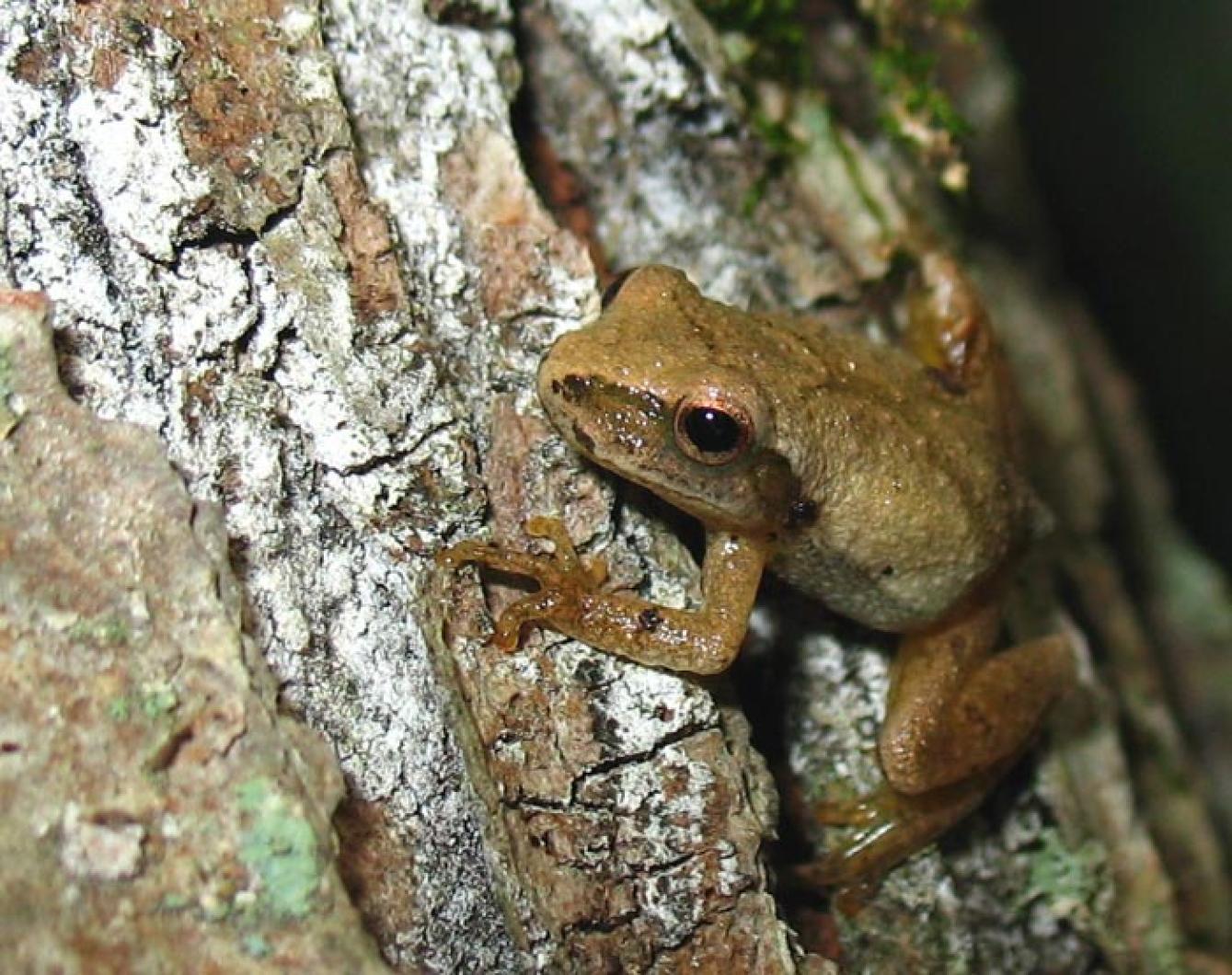The pinkletinks have reported their survival of another winter. The feat’s miraculousness does not wane with repetition, converting, as they must, their blood into antifreeze each winter through ramped-up glucose production, reaching something like a state of suspended animation. With each peep they hear, Islanders are reminded that they too have survived another winter, if only barely, and without the aid of antifreeze blood.
With pinkletinks pinkletinkling from Pilot Hill Farm to Lambert’s Cove spring has signalled its arrival, but a less welcome arrival for the frogs themselves has been discovered an island over: a deadly fungus that has devastated amphibian populations around the world.
Working with Roger Williams Park Zoo and Yale University, Nantucket’s Maria Mitchell Association has detected the presence of the baleful chytrid fungus — Batrachochytrium dendrobatidis, more specifically — an especially cruel pathogen that thickens the osmotic skin of frogs, suffocating them.
In the past decade the deafening evening serenade of frogs in central American rainforests has been reduced in many places to a ghostly hush as the fungus has ravaged rare endemic amphibians. It’s just now spreading into South America and is one of the many reasons, along with habitat loss, that a third of the world’s amphibians currently face extinction.
Although the presence of the fungus on Nantucket is surprising, thankfully it does not appear to be affecting Vineyard populations.
“The spring peeper crowd, they can be relaxed,” said Andrew McKenna-Foster, director of natural science education and programs at the Maria Mitchell Association in Nantucket. “The chytrid fungus does not look like it is going to affect wild frogs here. It could affect pet frogs though.”
The Vineyard’s roster of amphibians, along with pinkletinks (spring peepers to washashores), includes green frogs, pickerel frogs, fowler’s toads, spade foot toads and the non-native bullfrogs.
Mr. McKenna-Foster believes that the introduction of bullfrogs in rubber-lined backyard ponds in the past 50 years could explain the mysterious presence of the fungus, which originated in Africa.
“Bullfrogs actually spread it, they carry the fungus around with them and they’ll hop from pond to pond,” he said. “We still aren’t sure what the real effects are on some of the species up here, nobody’s sure why it only affects some species and not others, or why it has a greater impact on some species than on others.”
Another explanation could be castaway pet turtles and tortoises, some of which Mr. McKenna-Foster says he has found thriving in Nantucket’s cranberry bogs.
“There are just all sorts of weird things out there,” he said.
On this Island, naturalist Gus Ben David says that he’s seen nothing to indicate the presence of the fungus.
“I don’t think it’s really affecting anything here on the Vineyard,” he said. “I keep a close eye on all this stuff here, the status of all the different populations. We have declines in different things for different reasons but nothing that’s been attributed to any type of fungus.”
The presence of the fungus, even if it proves benign, is nevertheless a reminder of the plight frogs face everywhere. Both Mr. McKenna and Mr. Ben David agreed that the animals have more than fungi to worry about.
“You have a lot of habitat destruction,” said Mr. Ben David. “Now we have better wetlands laws to prevent it but just read the paper and you see that people are still infracting these laws and filling things in.”
“[Frogs] breathe through the water,” said Mr. McKenna-Foster. “In some areas of the United States you find a lot of deformed frogs and it’s evidence that there’s something very wrong in the water, like chemicals, endocrine disruptors or pesticides.”
For now though, Vineyarders — amphibians included — can breathe easy and enjoy the springtime heralds of the mysterious pinkletinks.
“Many people hear them but very few people have seen them, they’re secretive little guys,” said Mr. Ben David, who keeps some specimens at his World of Reptiles and Birds Park in Edgartown. “You go out at night to go out to try to find them and then they just stop singing, they’re very difficult to find.”
Mr. Ben David says that the peeping may die down in the coming days but will intensify in a week or two when the weather gets warmer for good.
On Nantucket the pinkletinks are thawing from their winter repose as well, and though they have emerged unscathed by Chytrid, the fungus’ presence still provides a cautionary lesson for Mr. McKenna-Foster.
“It’s a warning sign,” he said. “It’s just more evidence that we are spreading things around the world that are going to affect different species.”




Comments
Comment policy »